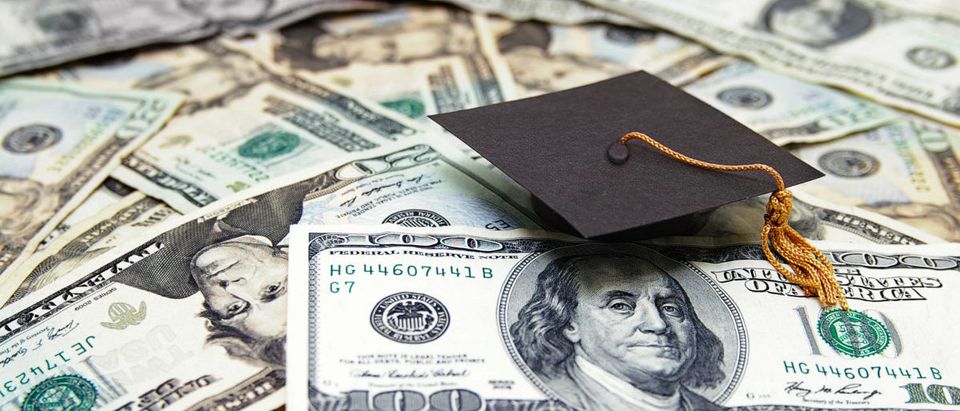Former President Bill Clinton repeatedly used to praise those Americans who worked hard and played by the rules: they should be rewarded for their values and their virtues, not penalized by government policies.
No doubt among those Americans Clinton had in mind were students and parents who borrowed money to attend our colleges and universities. Millions of these students and their families assumed loans and then dutifully paid them off.
Others chose not to borrow money and paid for their college educations with savings or disposable income. Even more chose not to spend any money at all on higher education, deterred by the increasingly burdensome costs.
Like owning a home or purchasing a car, a college education was long considered part of the American dream: an investment in one’s future that would lead to a good job with a stable income and benefits.
U.S. student-loan debt now stands at nearly $1.75 trillion. To put this figure in perspective, it slightly exceeds Russia’s annual $1.71 trillion gross domestic product. Such massive student debt is routinely cited as an economic drag, an impediment to young people marrying, starting families and buying a home.
During the 2020 presidential campaign, progressive Democrat candidates like Sens. Bernie Sanders and Elizabeth Warren proposed reducing student debt by some $50,000 per student. Candidate Joe Biden never fully embraced that $50,000 idea, but he did suggest that he’d be open to some sort of reduction.
Biden has now indicated that he’s considering cancelling some portion of that debt, possibly in the neighborhood of $10,000 per student (with a possible high-earners cap). Progressives remain disappointed that Biden hasn’t embraced their $50,000 dream.
Several critics have noted that such a loan-forgiveness policy would be regressive, with most of the “rewards” going to upper- and middle-income students who amassed significant debt at pricey law schools, medical schools, and graduate schools.
Before fixing this problem, it’s important to understand how the country got into this mess. Here are some timely, relevant, and stubborn facts.
Between 1982 and 2012, the Consumer Price Index was relatively low and stable given almost negligible inflation throughout the economy. During this 30-year period, however, American spending on health care (already rising at a rapid, unsustainable rate) rose at a rate twice the CPI’s growth rate.
But what many Americans may not realize is that during this same period, American spending on postsecondary education rose twice as fast as health care, or four times as fast as the CPI’s increase.
Much of this new spending went for enhanced campus amenities and a substantial increase in school administration costs – but not teaching. Some of this cost inflation was aided and abetted by increases in federal student loans and grants. Postsecondary-education growth was promoted with appeals to increase enrollment, completion, and the awarding of certificates.
If enacted, Biden’s loan forgiveness, in addition to being regressive, would change nothing structurally about the federal student loan and grant programs.
If Biden wanted to make a positive contribution to changing postsecondary education’s upward cost trajectory and, by doing so, benefit students, he could declare that schools with high student-loan default rates would be barred from admitting students bringing federal loans and grants. Additionally, Biden could require that students attending schools whose costs continued to exceed the national inflation rate would likewise be ineligible for federal aid. These schools could also be barred from receiving any federal research grants.
Former Education Secretary William Bennett, appearing at a Senate higher-education hearing in the late 1980s, was asked by Senator Ted Kennedy whether a high student-loan default rate was a proxy for a postsecondary-education institution’s quality. Bennett’s emphatic answer: Yes!
Students who attend poor quality schools with high default rates are being ripped off by those schools. They do not receive an education. Without an education, they find it difficult to get a job. Without a job, they often default on their student loans.
For these students, who have been harmed by the system’s structural flaws that too often reward poor quality and out-of-control spending, targeted loan forgiveness might well make sense.
Throwing money at the problem through massive debt-forgiveness, however, is just another Biden spending initiative that fails to remedy the serious underlying structural problems. Too many of our postsecondary-education institutions remain responsible for today’s unsustainable student debt.
Meaningful postsecondary education reform will require colleges and universities to have substantial skin in the game. They need to bear the cleanup costs well before American taxpayers.
Charles Kolb served as Deputy Assistant to the President for Domestic Policy from 1990-1992 in the George H.W. Bush White House


